Yuki Harada Solo Exhibition: Go stay go pakiki all da time! Eh… no give up ‘til you pau!
June 20th – July 9, 2023, Museum of Japanese Emigration to Hawaii (Yamaguchi)
原田裕規 個展 やっぱり世の中で一ばんえらいのが人間のようでごいす
2023年6月20日 – 7月9日、日本ハワイ移民資料館(山口)
A new solo exhibition by artist Yuki Harada (1989–) will be held at the Museum of Japanese Emigration to Hawaii, a space dedicated to the history of Japanese emigration to the islands.
The featured work, Shadowing, is a video piece inspired by the legacy of Japanese migration from Suō-Ōshima and the writings of Tsuneichi Miyamoto (1907–1981), a folklorist born on the island. In the film, Harada appears as a “digital human” taking on the role of a Japanese American in Hawaii, narrating various episodes drawn from oral traditions passed down within Nikkei communities.
“Go stay go Pakiki all da time! Eh…no give up ’til you pau!”
(Literal translation: Fight on forever! Don’t give up until the end!)
The title of the exhibition, imbued with a strong sense of message, is taken from Miyamoto’s oral history Grandpa Kajita Tomigoro. It is a line spoken by an elderly man whom Miyamoto met on Tsushima in 1950. This succinct expression of a life’s wisdom reflects Miyamoto’s affirmation of the enduring human spirit.
Many people from Suō-Ōshima and other regions of Japan emigrated to Hawaii, overcoming hardship to build new lives and forming transnational cultures such as Hawaiian Pidgin. Seeing in their journey a powerful expression of human nature, Harada adopts Kajita’s words as the exhibition title to infuse his work with a renewed context.
The Museum of Japanese Emigration to Hawaii, which preserves the memory of those who made the transpacific journey, continues to serve as a cultural bridge between Japan and Hawaii. The museum is housed in the former Fukumoto residence, a rare example of Taishō-era Japanese-Western eclectic architecture, and is itself a highlight of the visit.
In this singular space, where history lives on, witness the convergence of fact and fiction—and the birth of a new narrative.
日本ハワイ移民資料館を舞台に、アーティスト・原田裕規(1989–)の新作展を開催します。
本展で発表する《Shadowing》は、周防大島とゆかりの深い「ハワイ移民」や島出身の民俗学者・宮本常一(1907–1981)の著作をモチーフとした映像作品。本作では、ハワイの日系アメリカ人に扮した「デジタルヒューマン」としての作家が、日系人に伝わる民間伝承に基づくさまざまなエピソードを語ります。
「やっぱり世の中で一ばんえらいのが人間のようでごいす」
メッセージ性の強い展覧会名は、宮本常一による聞書「梶田富五郎翁」からの引用。昭和25年に宮本が対馬で出会ったひとりの老人、梶田翁の台詞です。翁の人生の実感が集約されたこの言葉には、前進する人間の性(さが)を肯定する宮本のまなざしが内包されています。
周防大島をはじめとする各地からハワイへと渡った人々は、多くの困難を乗り越えて現地で社会を築き、ピジン英語に代表されるトランスナショナルな文化を形成するに至りました。そのような彼/彼女らの歩みに、人間の力強い本性(ほんせい)を見出した原田は、梶田翁-宮本の象徴的な台詞を展覧会名に据えることで、自作に新たな文脈を呼び込みます。
多くの島民がハワイに旅立った歴史をもつ周防大島の歴史資料を公開し、今なおハワイと日本のハブとして機能する日本ハワイ移民資料館は、大正期の和洋折衷建築(旧福元邸)も見どころのひとつです。
豊かな歴史を体現する無二の空間において、史実とフィクションが呼応し、新たなナラティブが誕生する瞬間をお楽しみください。
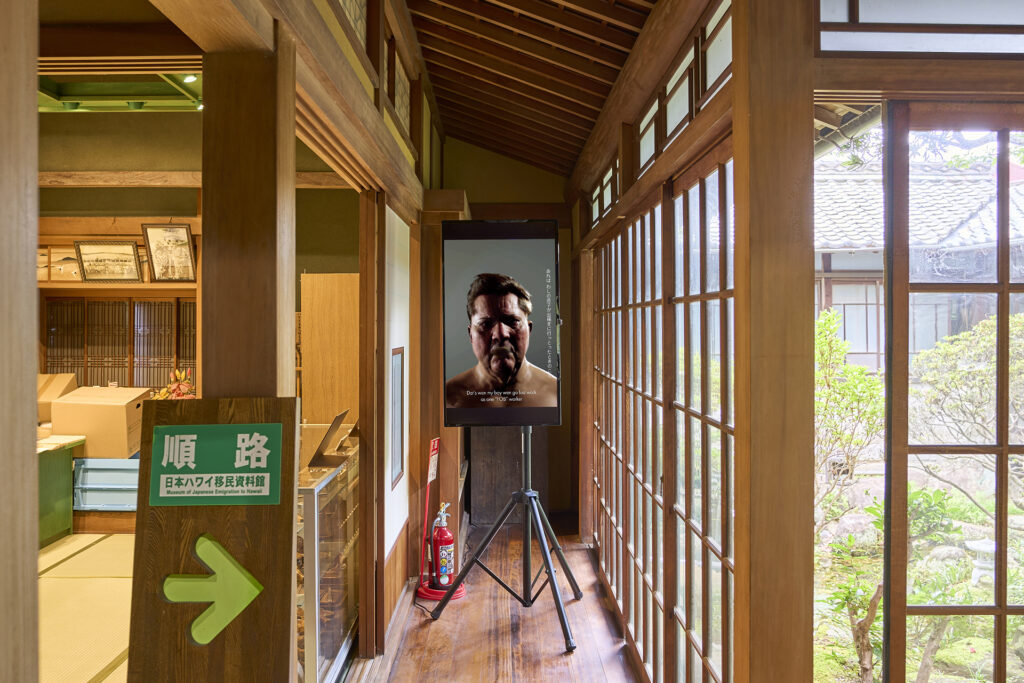
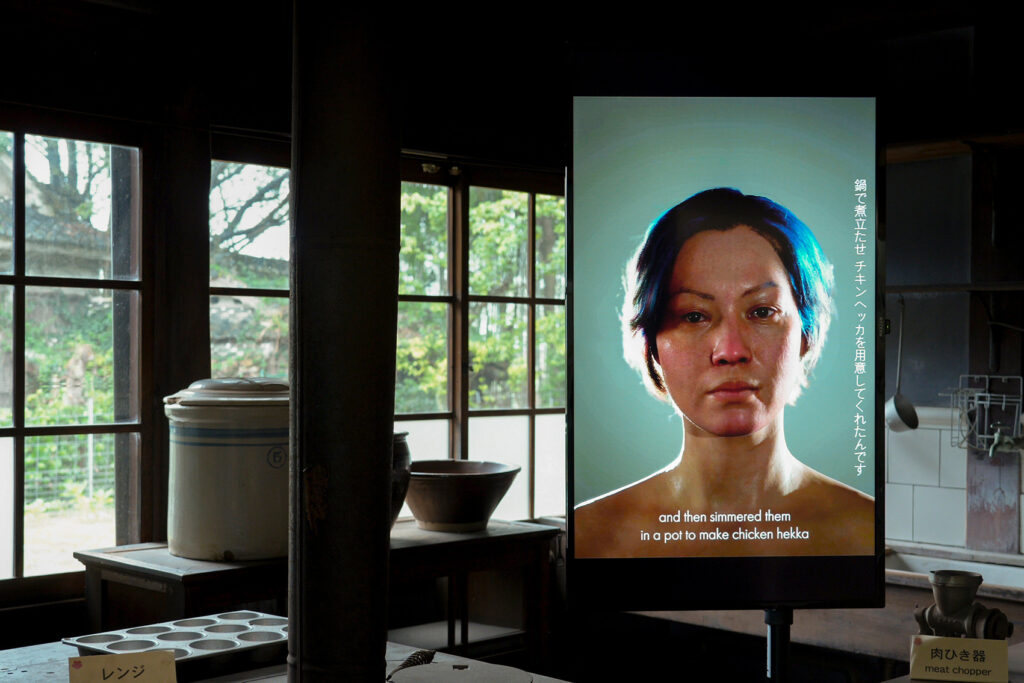
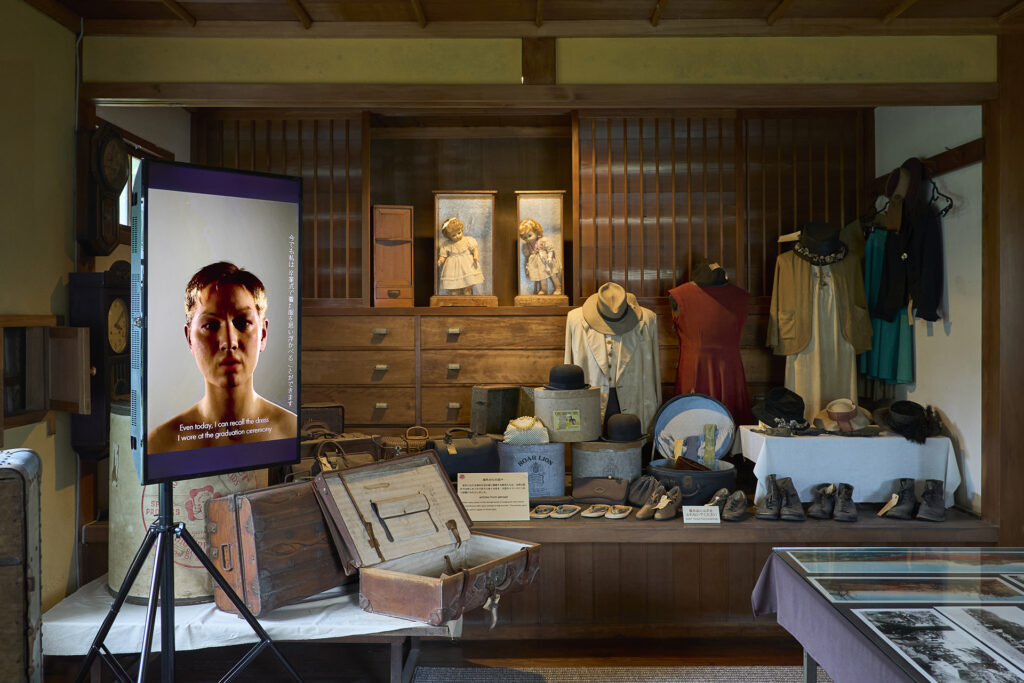
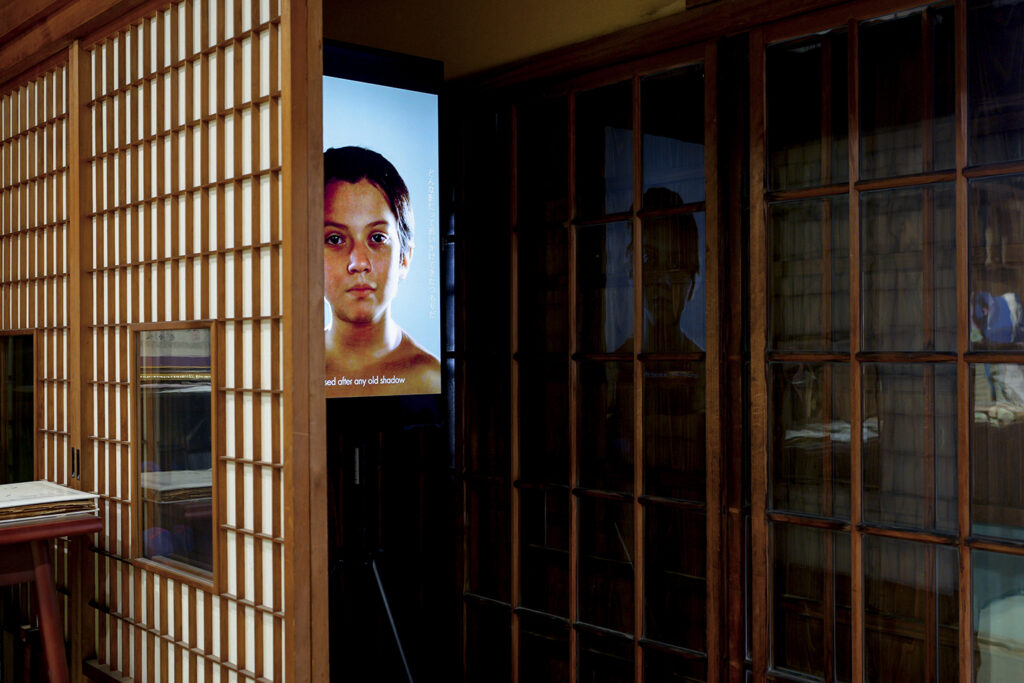
About the Museum of Japanese Emigration to Hawaii
Opened in 1999, the Museum of Japanese Emigration to Hawaii showcases materials and tools that offer insight into the lives of people from Suō-Ōshima, more than 5,000 of whom emigrated to Hawaii. The building itself is a repurposed residence originally constructed in 1928 by Chōemon Fukumoto, a successful trading merchant who made his fortune in the United States.
日本ハワイ移民資料館について
1999年にオープン。5,000人を超える島民がハワイに渡った周防大島の移民の歴史を伝えるために、当時の暮らしを知ることのできる資料や道具が展示されている。建物は、アメリカに渡り貿易商として成功した故・福元長右衛門が1928年に建設した邸宅を再生活用したもの。
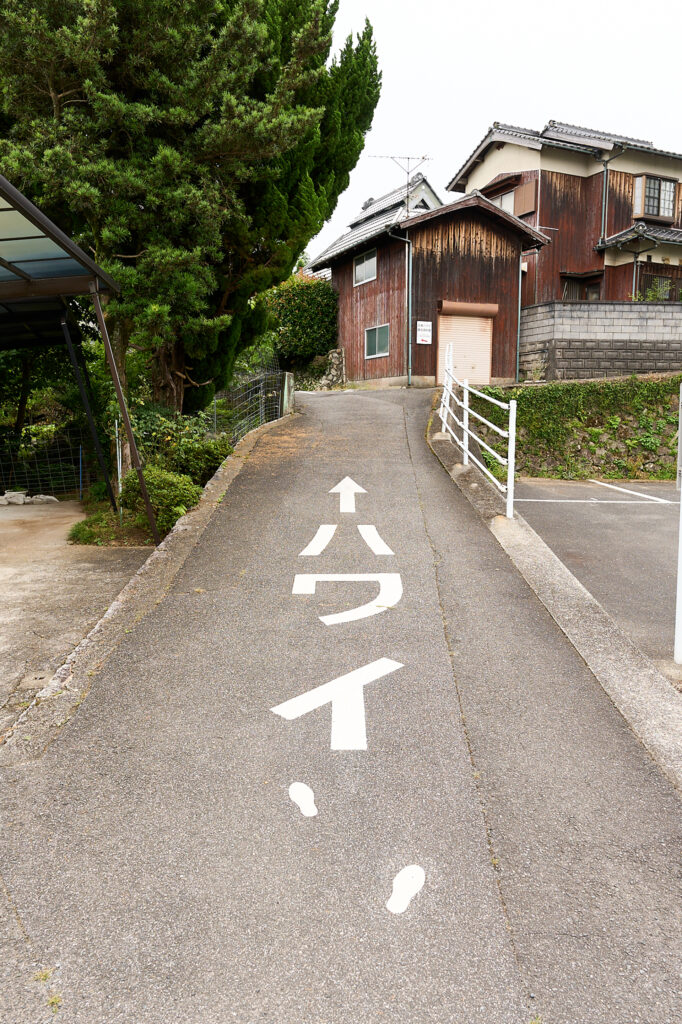
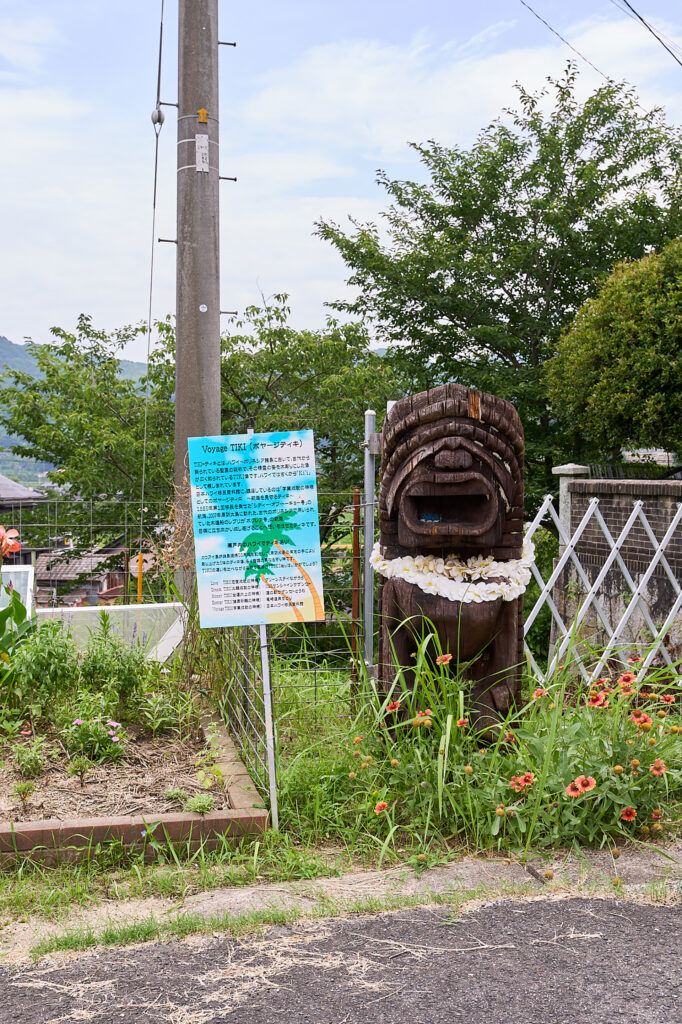
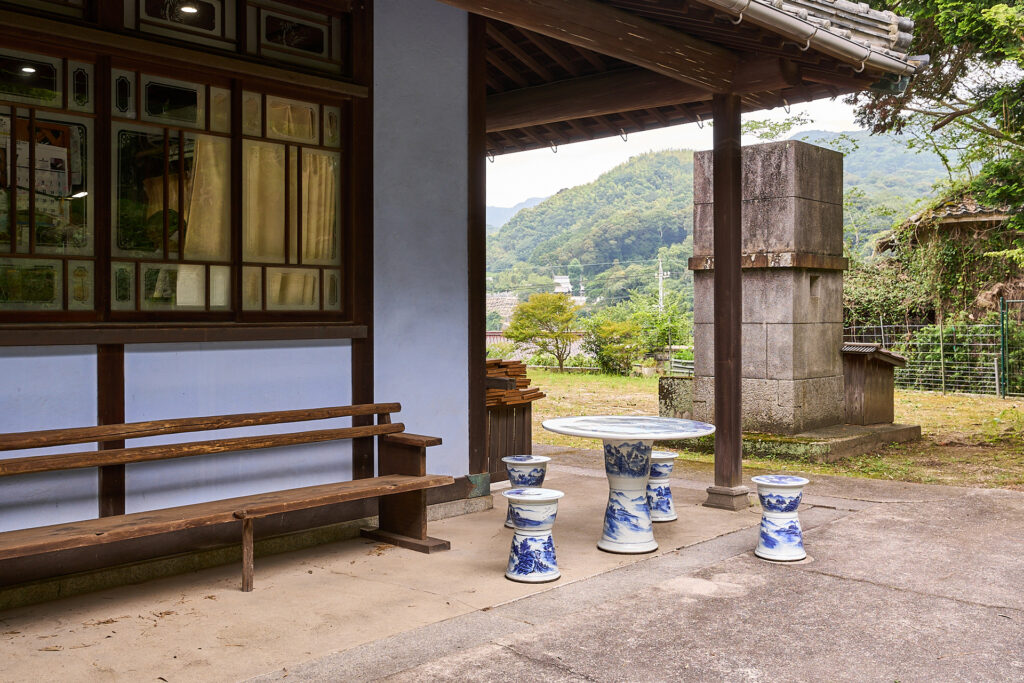
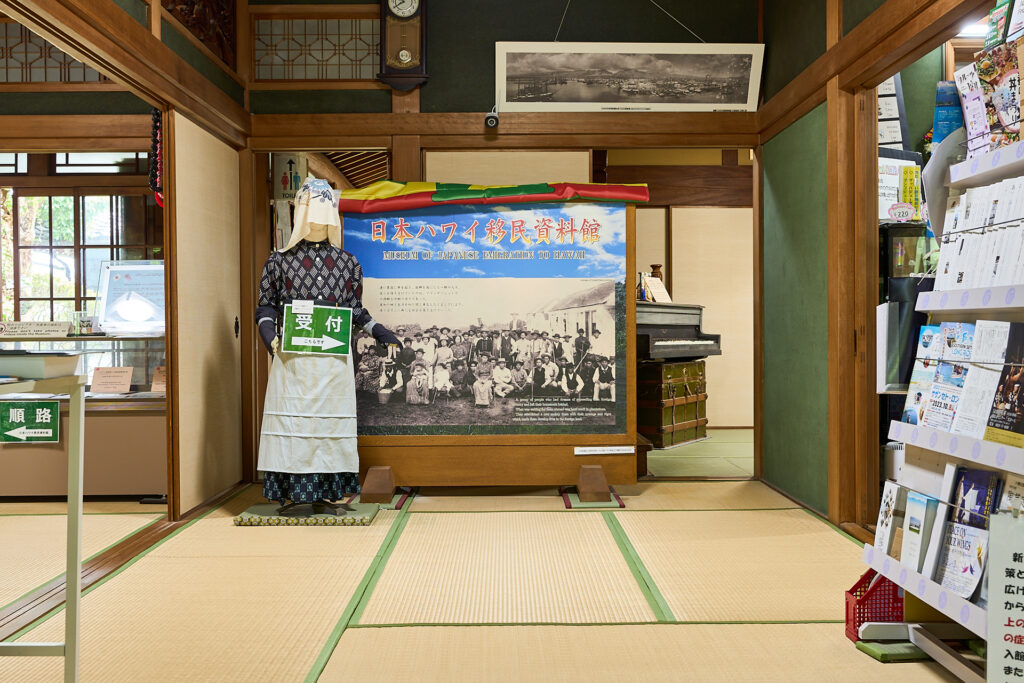
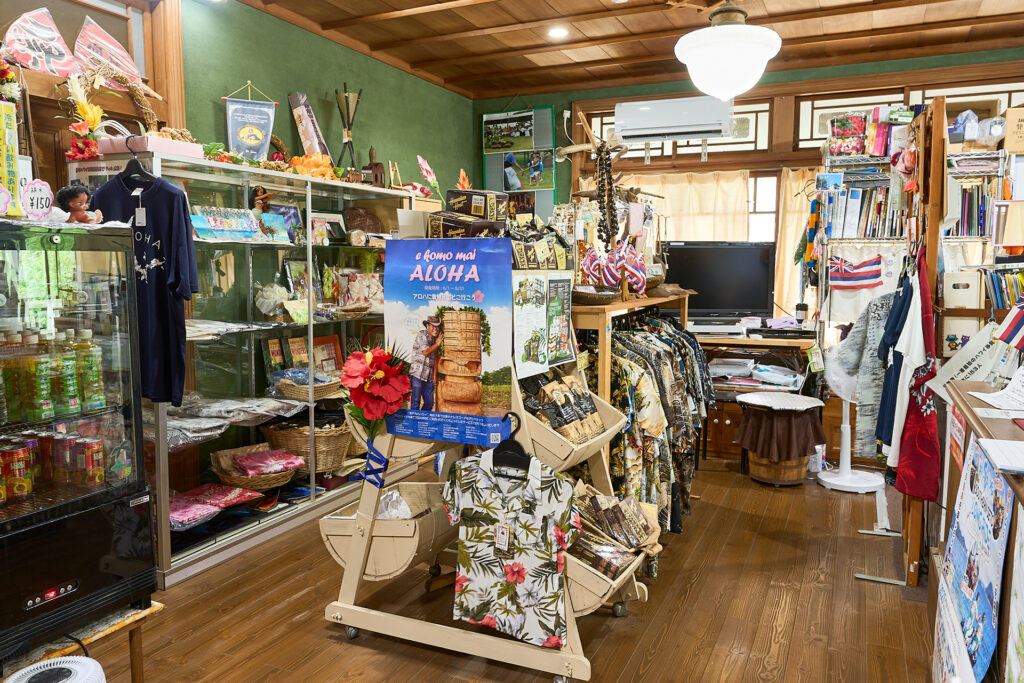
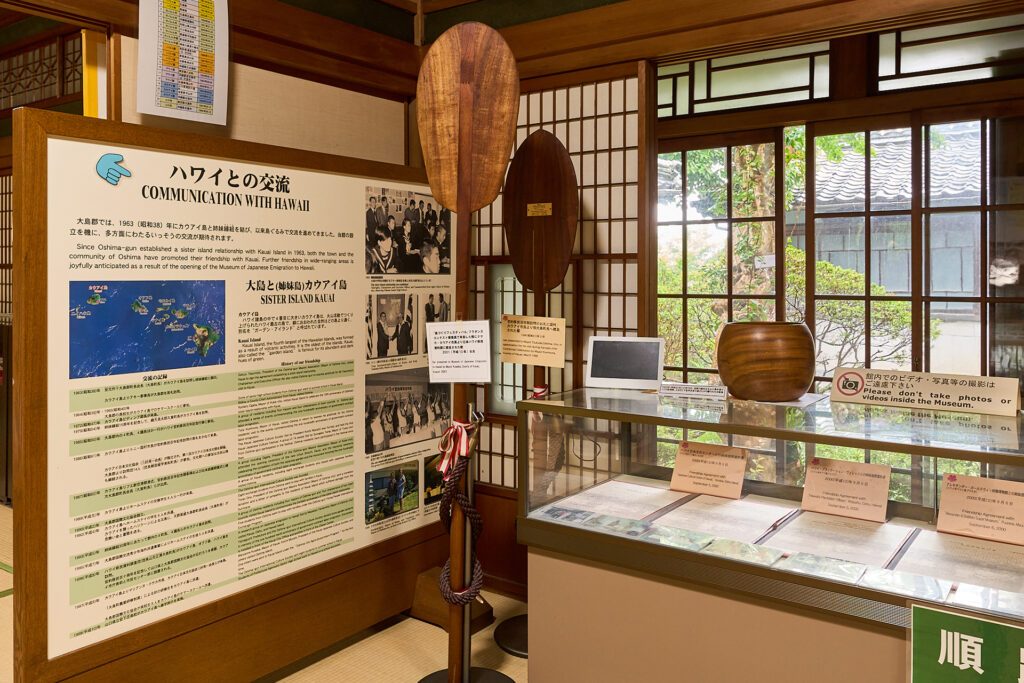
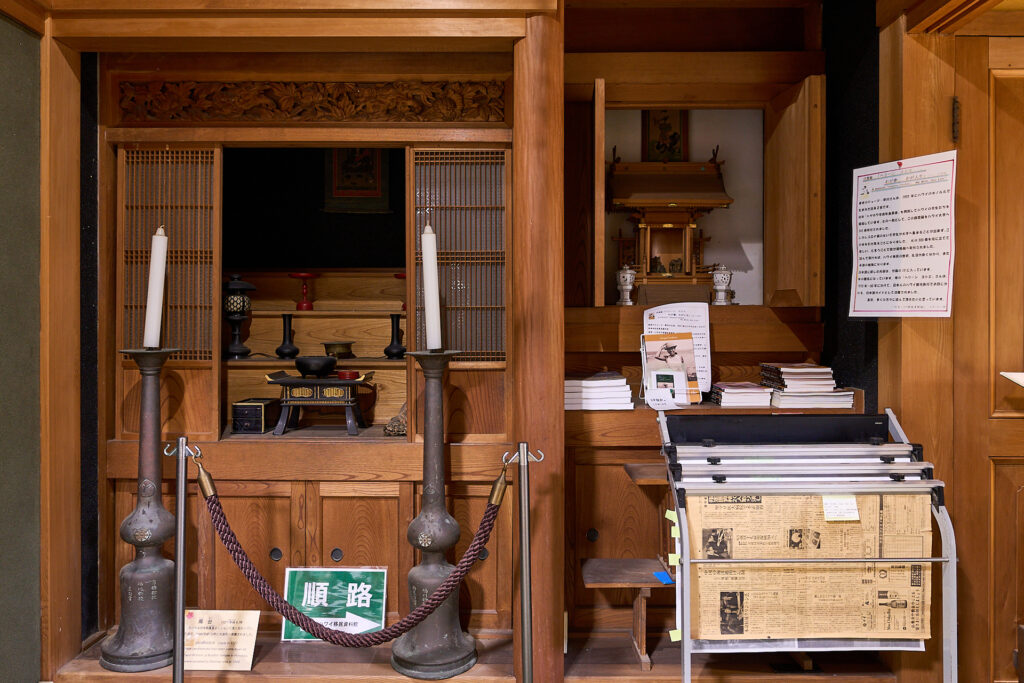
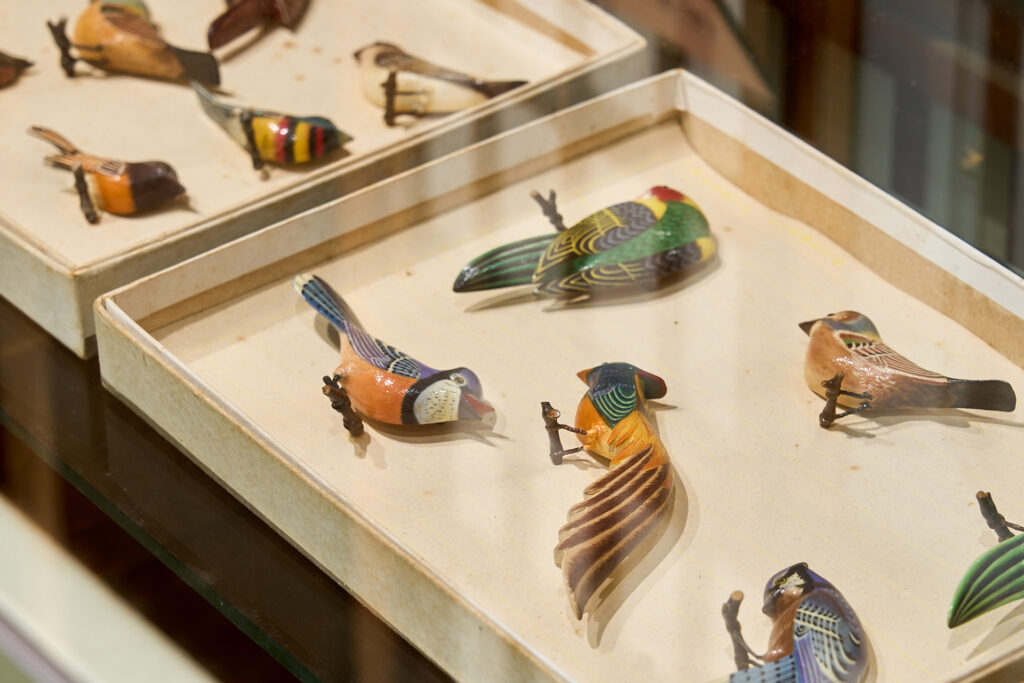
The video works making up the Shadowing series shown here and there in the Museum all have basically the same structure.
The persons appearing in the monitors are digital humans whose production took Japanese-Americans residing in Hawaii as models. Their facial expressions are interlocked with those of Harada, the artist, by means of face-tracking technology. The digital humans could therefore be regarded as avatars of Harada.
The works are subtitled in both Japanese and English. In many cases, however, the English subtitles are in Pidgin English. Pidgin is a mixed language born from the contact between two or more languages. The Pidgin English in this series was developed by the people who emigrated to Hawaii from the late 19th to the early 20th century and their descendants. While based on English, it is a blend of words and grammatical features from the mother tongues of immigrants from Japan, Portugal, the Philippines, and other countries. A key point about the Japanese subtitles is that they too are sometimes colored by the dialect of the Sanyo region. The subtitles in this dialect are displayed in correspondence with those in Pidgin English.
Do you realize that you are hearing two types of voices? One is the voices of Japanese-American residents of Hawaii, and the other, the voice of Harada himself. In the works, Harada shadows (immediately repeats) the script lines read by the Japanese-Americans.
What the two are reading are stories collected and re-composed by Harada from various sources, including interviews with Japanese-Americans and documentation. Together with the permanent exhibition telling the story of people who emigrated to Hawaii from Suo-Oshima, we hope you will enjoy these video works and listen to their voices.
Text by Mari Tsukamoto (Curator, The Museum of Art, Kochi)
資料館内に配された映像作品「Shadowing」シリーズは、基本的に同じ構造をもっています。
モニターに映る人物は、ハワイ在住の日系アメリカ人をモデルに制作された「デジタルヒューマン」。その表情はフェイストラッキング技術によって作者の原田と連動しています。したがって、このデジタルヒューマンは原田のアバター(化身)といえるでしょう。
映像には日英字幕が付されています。ただし、英語字幕の多くは「ピジン英語」と呼ばれるもの。「ピジン」とは、2つの異なる言語が接触した結果に生まれた混成語を指します。本作におけるピジン英語は、19世紀後半から20世紀初頭にかけてハワイに渡った移民やその子孫が発展させたもので、英語をベースにしながらも、日本やポルトガル、フィリピンといった移民の母語に由来する単語や文法が混合しています。一方の日本語字幕も、時おり山陽地方の方言を帯びるのがポイント。訛りを帯びた口調の字幕は、ピジン英語のそれと対応して表示されます。
さらに、聞こえてくる「声」にも2種類があることにお気づきでしょうか。一方はハワイの日系アメリカ人、もう一方が原田自身の声です。映像では、日系アメリカ人が読み上げる台本を原田が「シャドーイング(復唱)」して追いかけています。
ふたりが読み上げるのは、原田が日系アメリカ人への聞き取りや文献資料など、さまざまなソースをもとに再構成した物語。周防大島のハワイ移民の歴史を物語る常設展示とあわせて、ぜひ彼/彼女らの声に耳を傾けてみてください。
文:塚本麻莉(本展キュレーター)
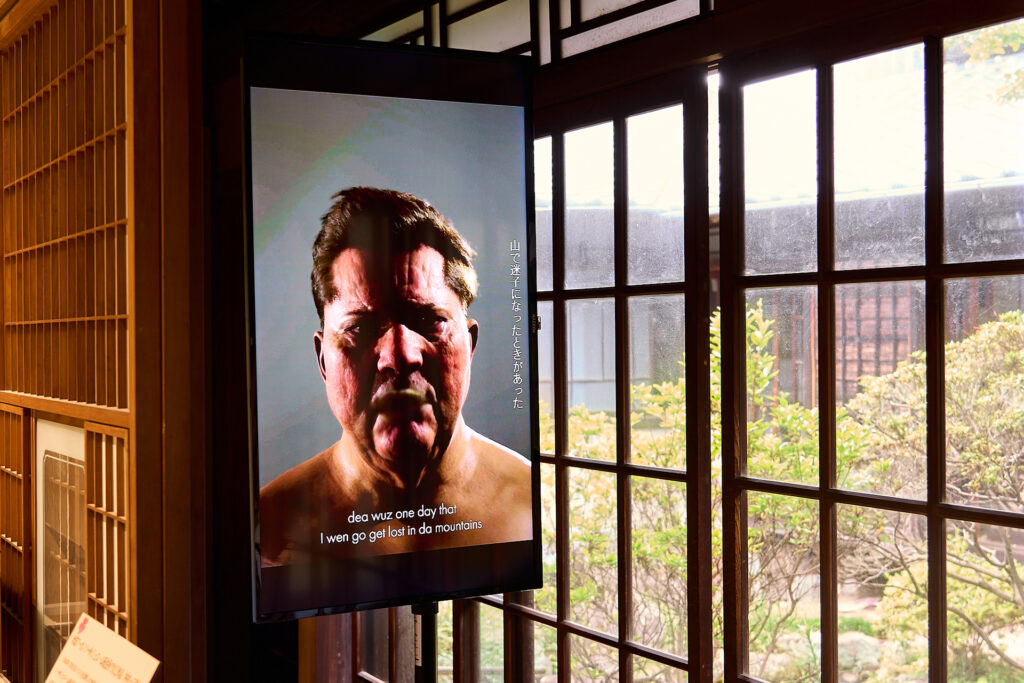
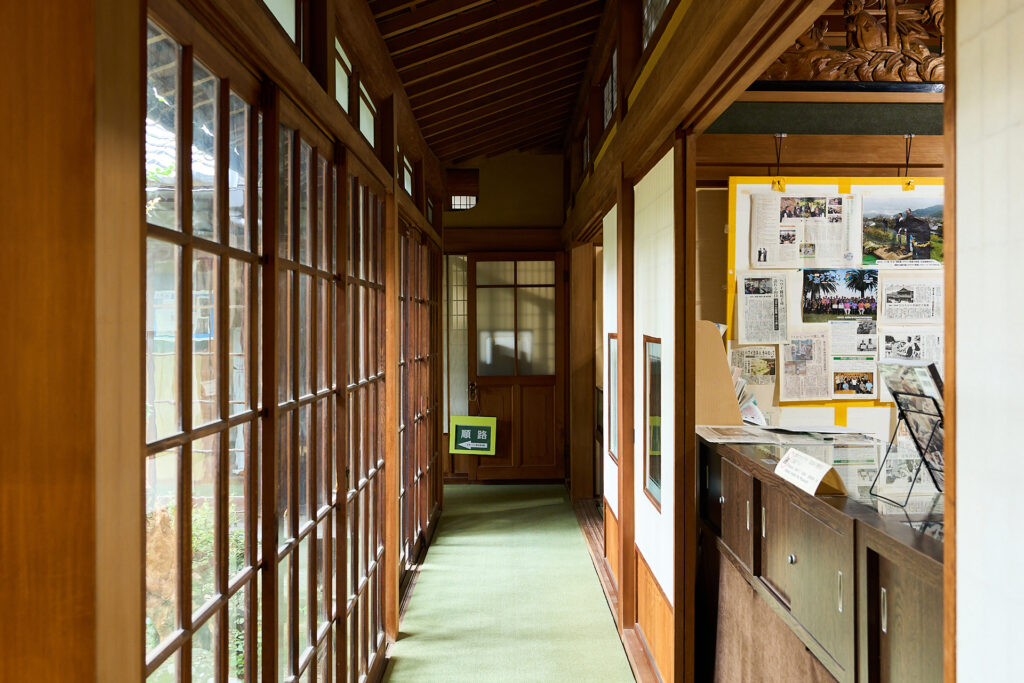
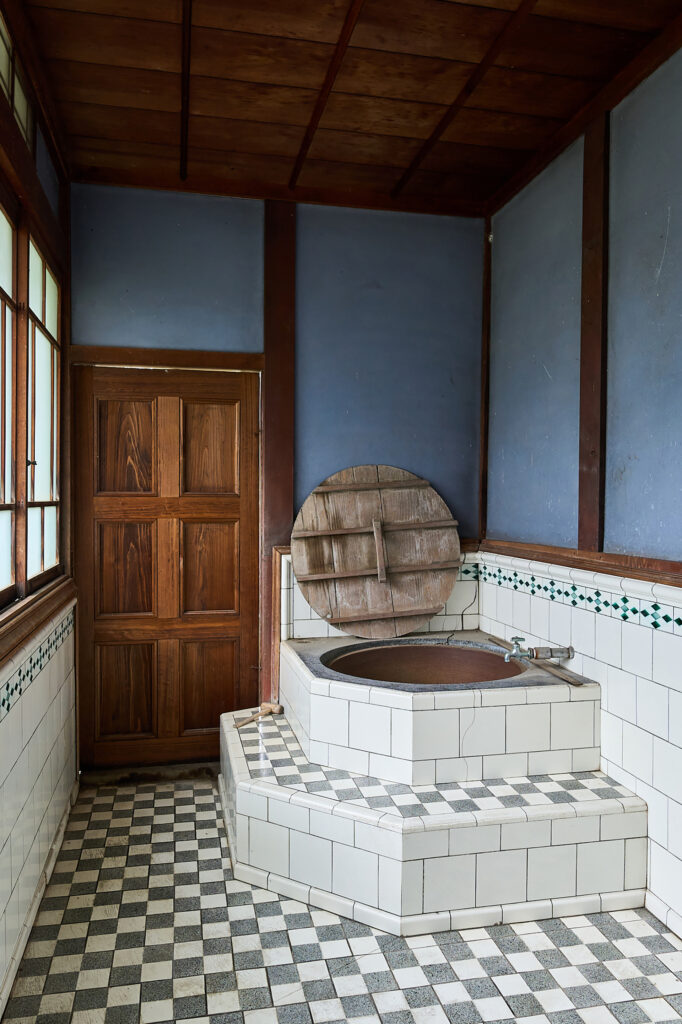
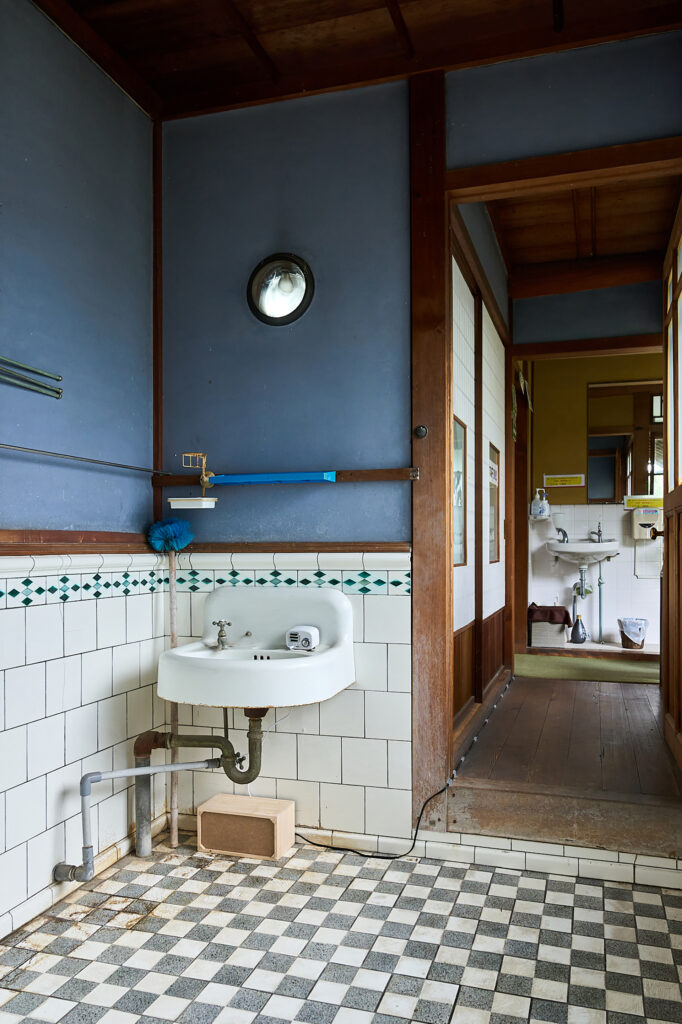
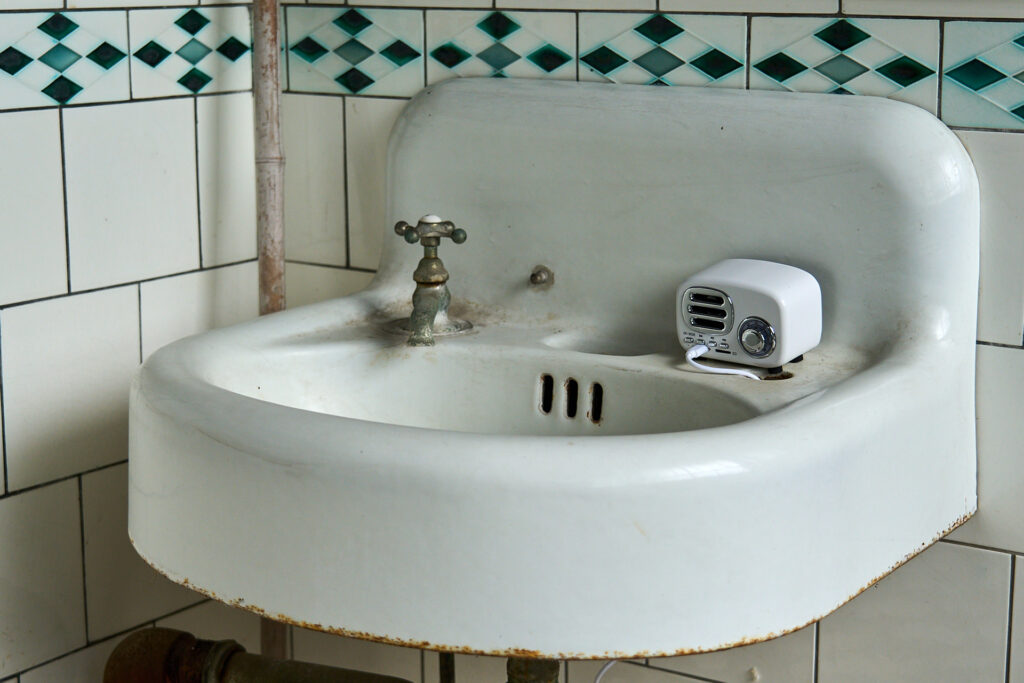
Hello, and welcome to the Museum of Japanese Emigration to Hawaii.
My name is Yuki Harada, and I’m the artist currently holding a solo exhibition here.
The works on display have all been realized through close collaboration with Japanese Americans living in Hawaii. My collaborators have supported the project in many ways—through interviews that helped shape the stories, by translating the scripts into Pidgin English, and by lending their voices to the recordings.
In that sense, the “Shadowing” series presented in this exhibition is very much a collaborative endeavor—one created through dialogue and shared imagination with many individuals.
There’s one idea I paid particular attention to while creating this work: “layering voices.”
Those who emigrated to Hawaii developed new ways of speaking, most notably Hawaiian Pidgin—a unique form of expression born from the overlapping voices of people from diverse backgrounds.
Each piece in this exhibition contains the voices of myself and my collaborators from the Nikkei community. I invite you to listen closely to the resonances that emerge between them.
This building—the former Fukumoto residence—is itself a one-of-a-kind space, rich with the history of Suō-Ōshima and Japanese emigration.
Real lives were lived here. People made their homes, their futures, within these walls.
I hope you’ll not only experience the works on display, but also take in the presence of this space itself as you move through the exhibition.
— from the audio guide by the artist
こんにちは。日本ハワイ移民資料館へようこそ。
いまここで個展を行っている、アーティストの原田裕規です。
いま展示している作品は、すべてハワイの日系アメリカ人の方々とのコラボレーションによって実現しました。
コラボレーターの方々には、物語を考えるためのインタビューや、台本のピジン英語化、そして物語の朗読など、さまざまな面で制作をサポートしていただいています。
このように、この展覧会で展示している「シャドーイング」シリーズは、ぼくとさまざまな方々とのコラボレーションワークであるといえると思っています。
この作品をつくるうえで特に意識していたことがあります。「声を重ねること」です。ハワイに渡った人々は、その独自の歩みの中で、ピジン英語に代表される「新たな声」を発明しました。それは、さまざまなルーツをもつ人々の「声の重なり合い」の結果生まれたものです。本展におけるどの作品にも、ぼくや日系人の方々の声が収められています。ぜひ、その響き合いに耳を傾けてみてください。
またこの旧福元邸は、周防大島や移民の歴史を体現する無二の空間です。
この建物では、実際に人々が暮らし、それぞれの人生を営んでいました。
ぼくの作品だけでなく、この空間の息遣いも感じ取りながら、この展覧会をお楽しみいただければ幸いです。
──作家による音声ガイダンスより
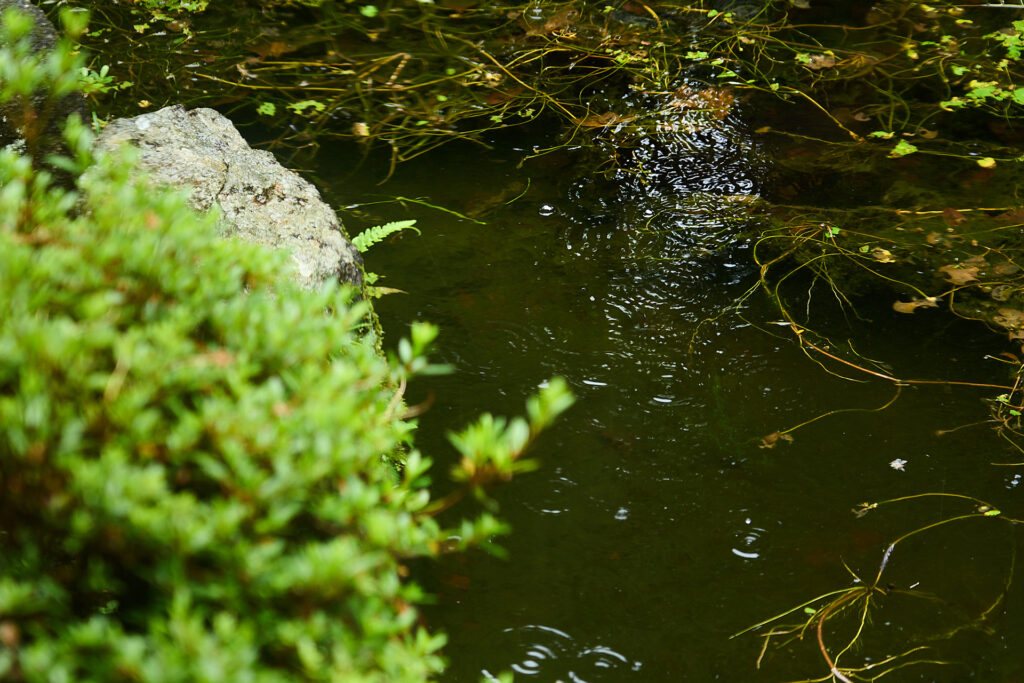
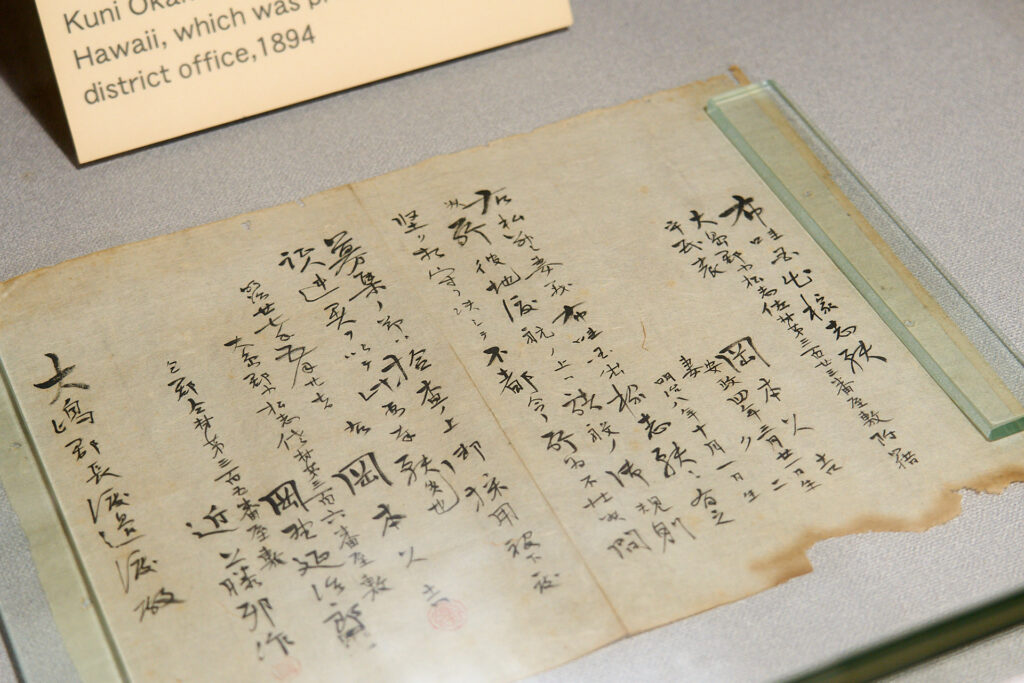
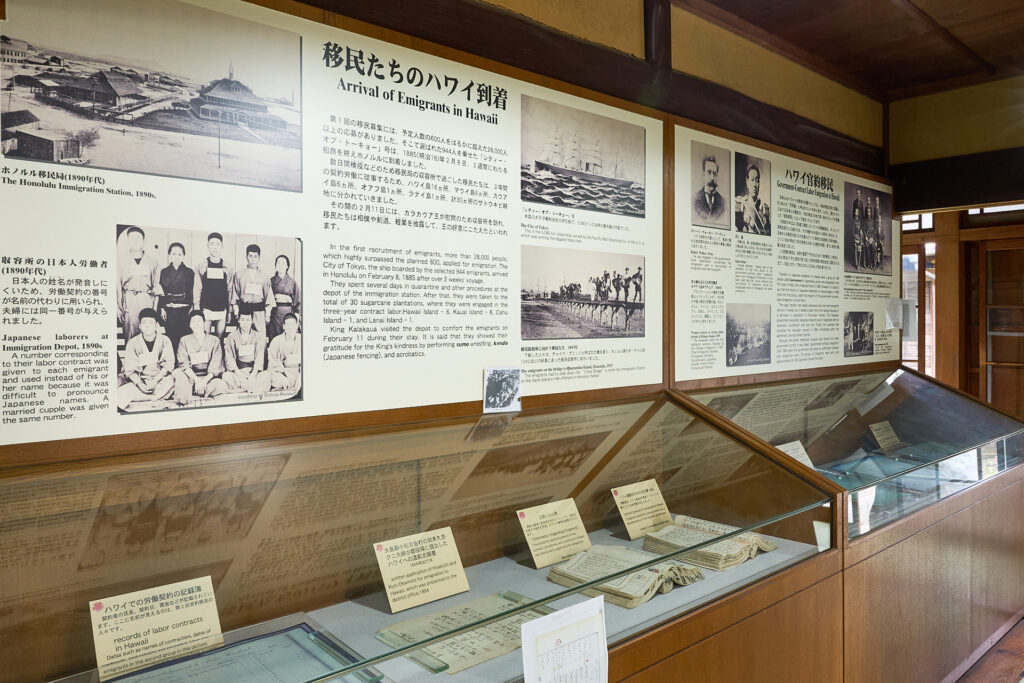
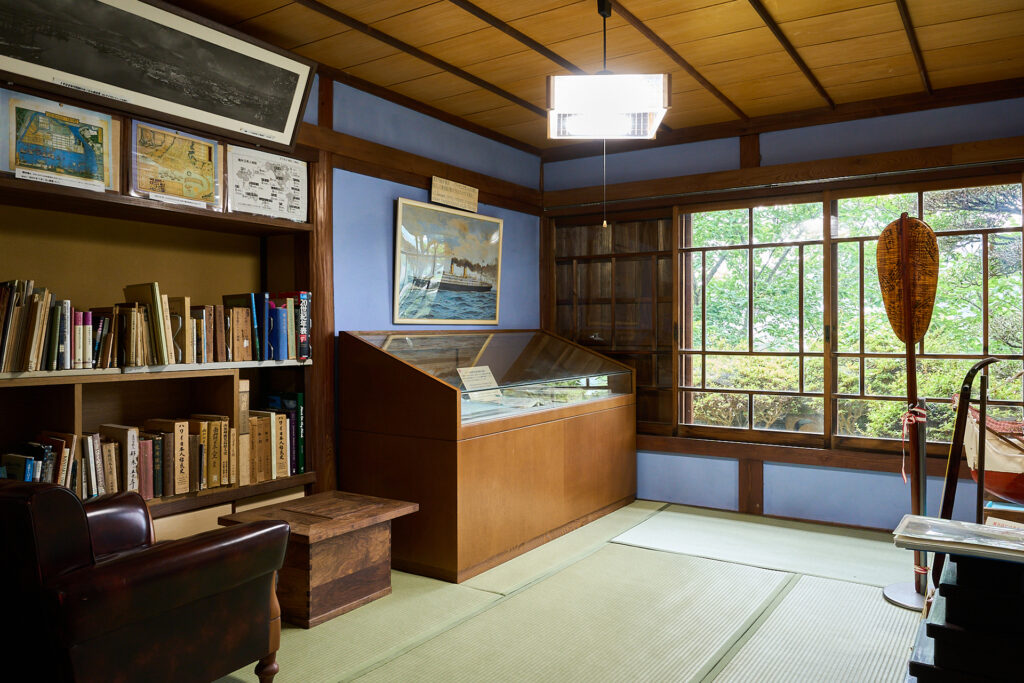
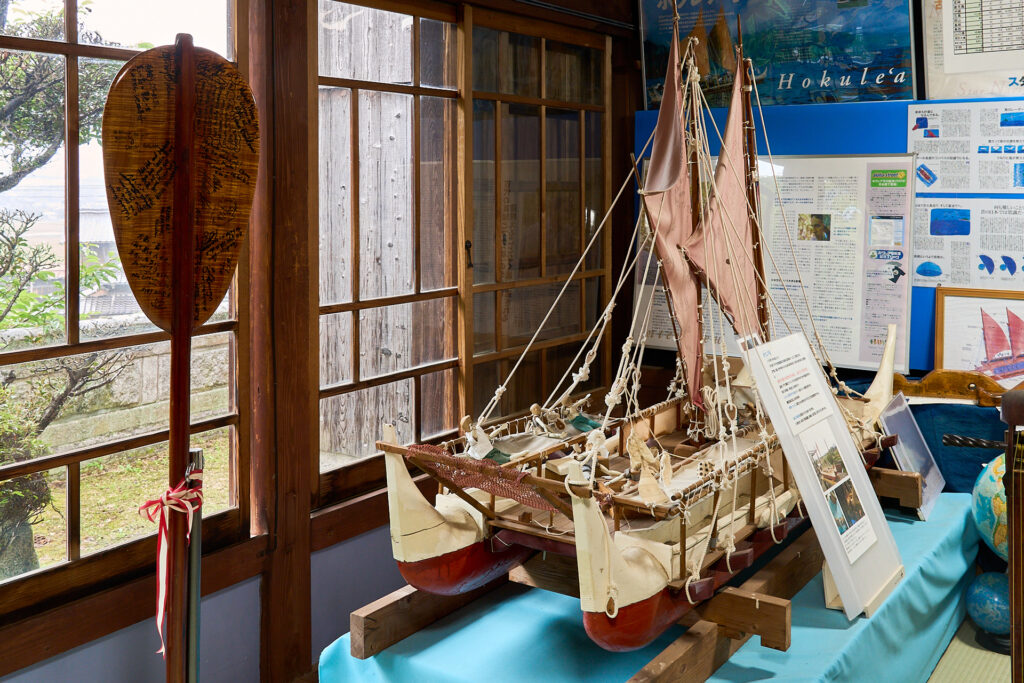
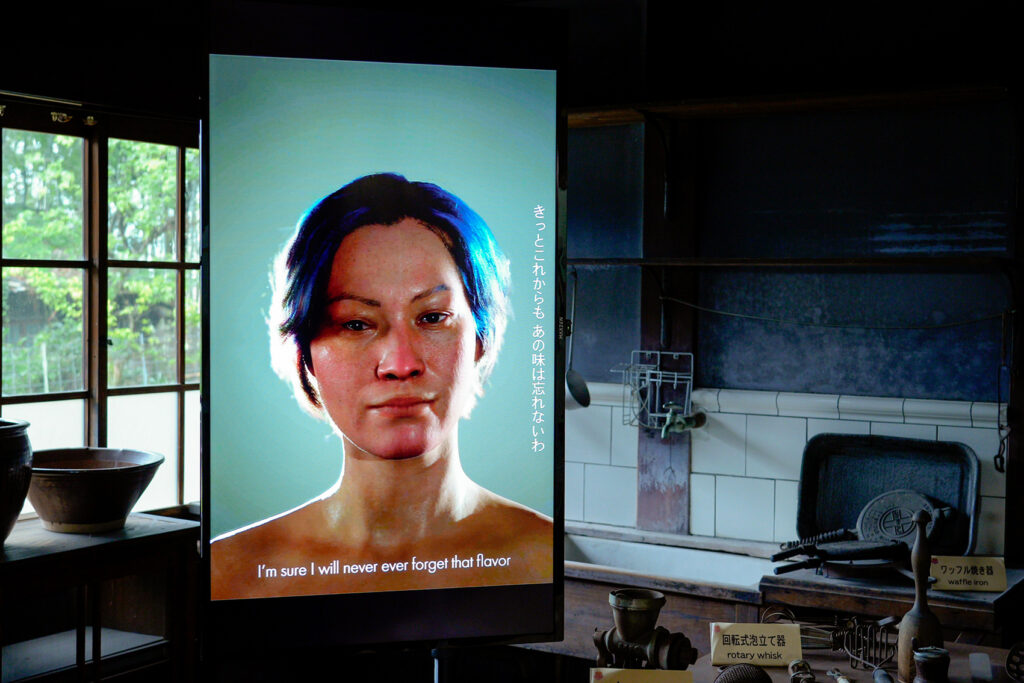
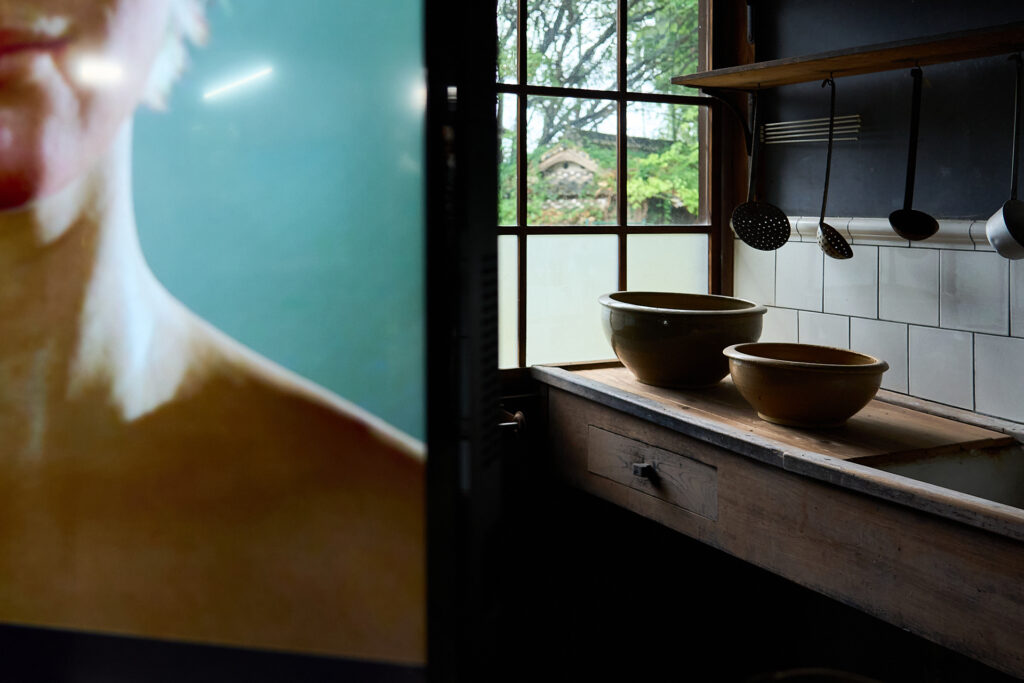
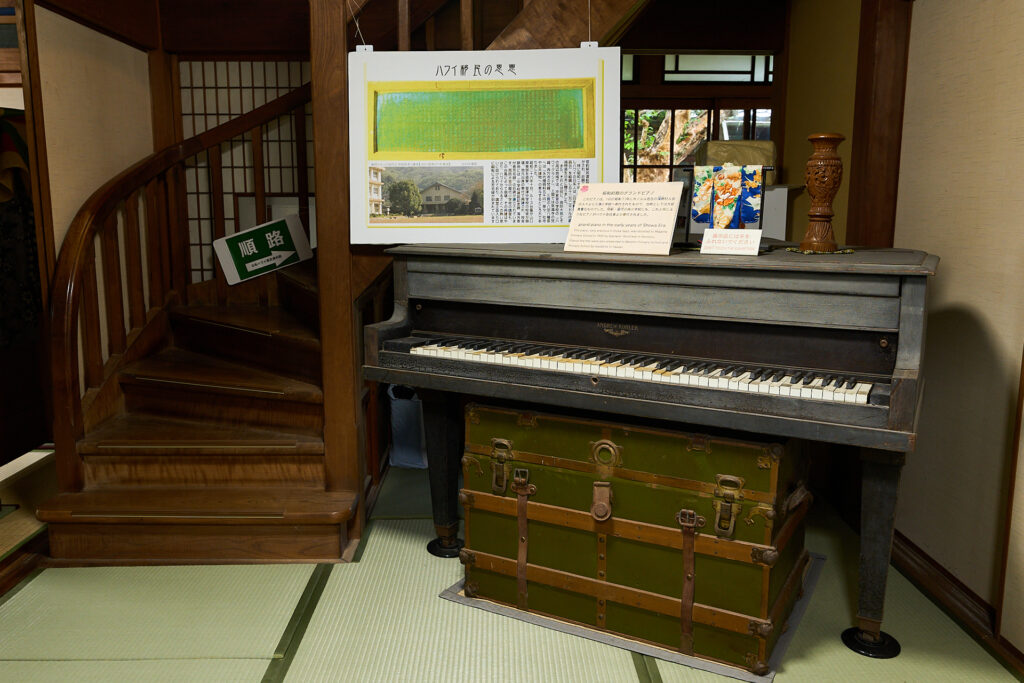
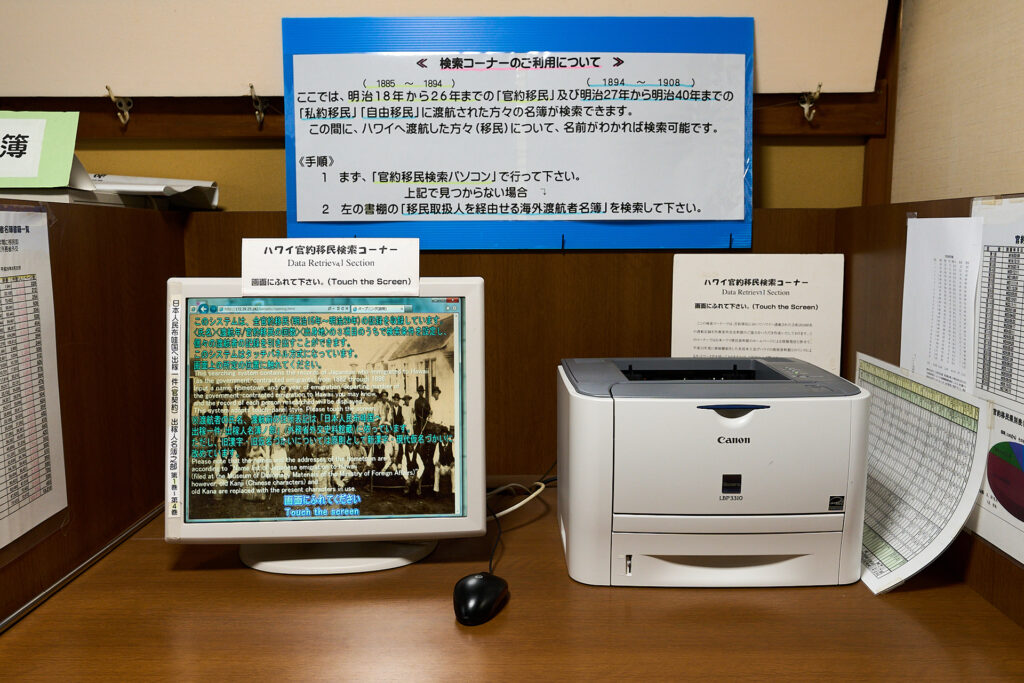
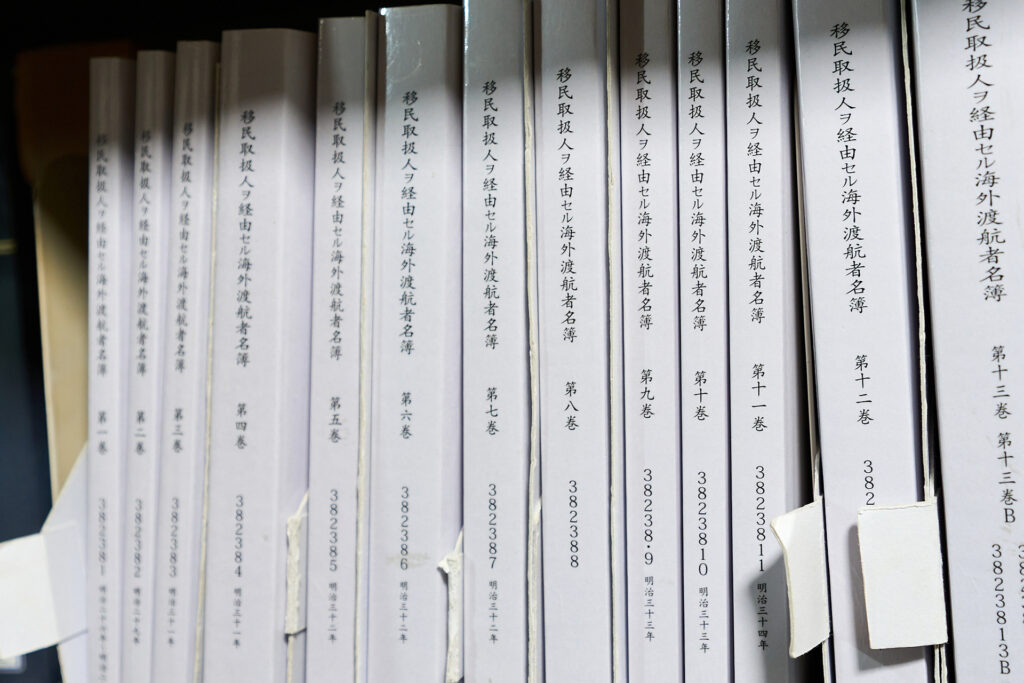
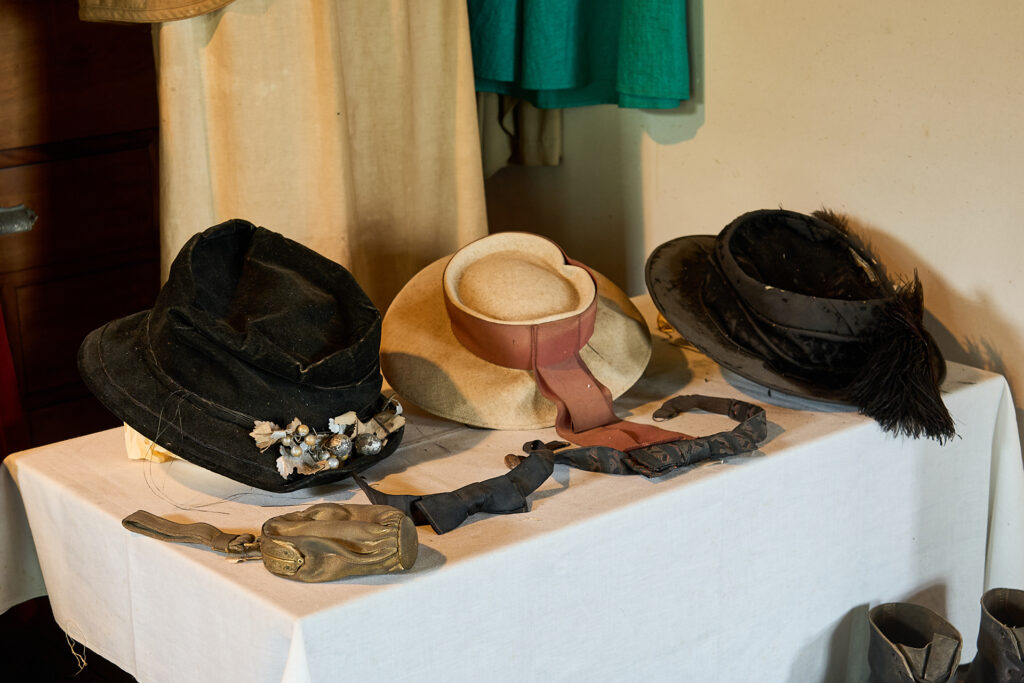
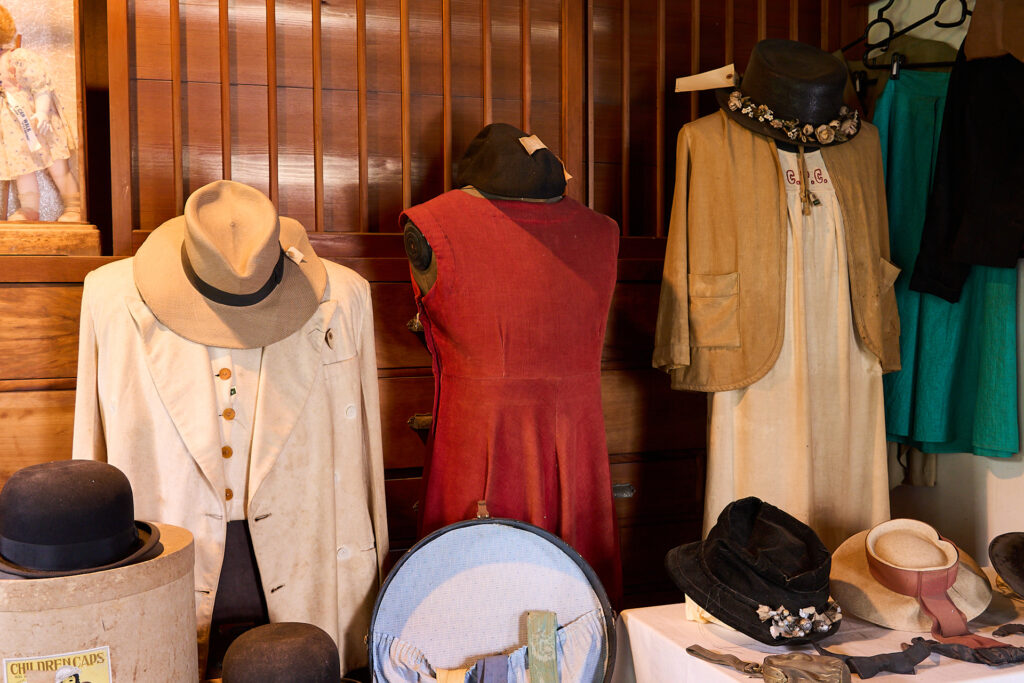
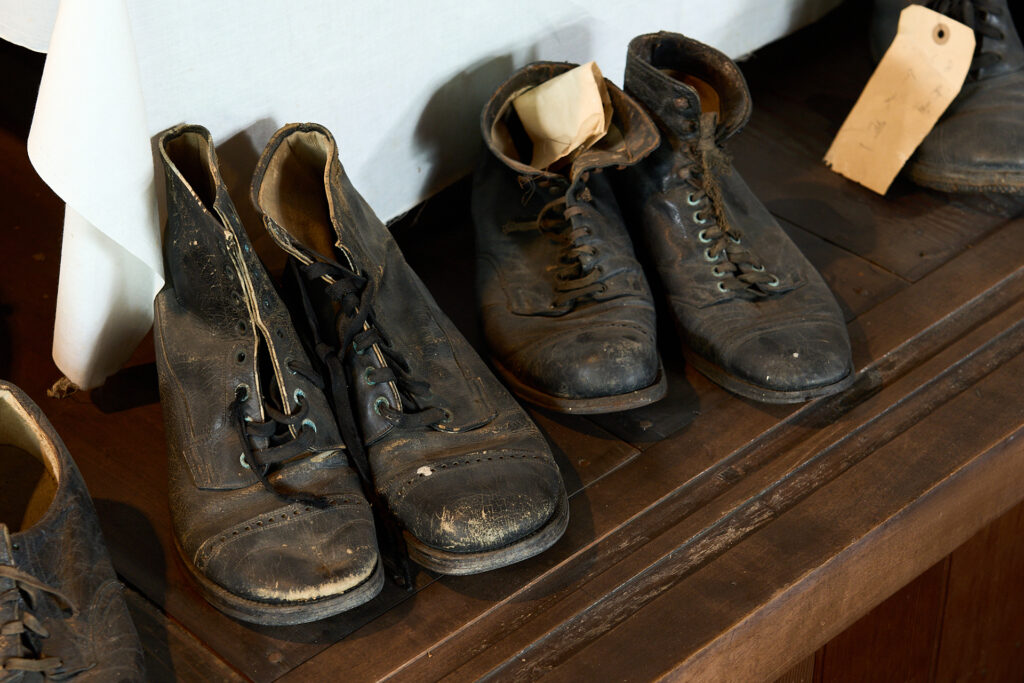
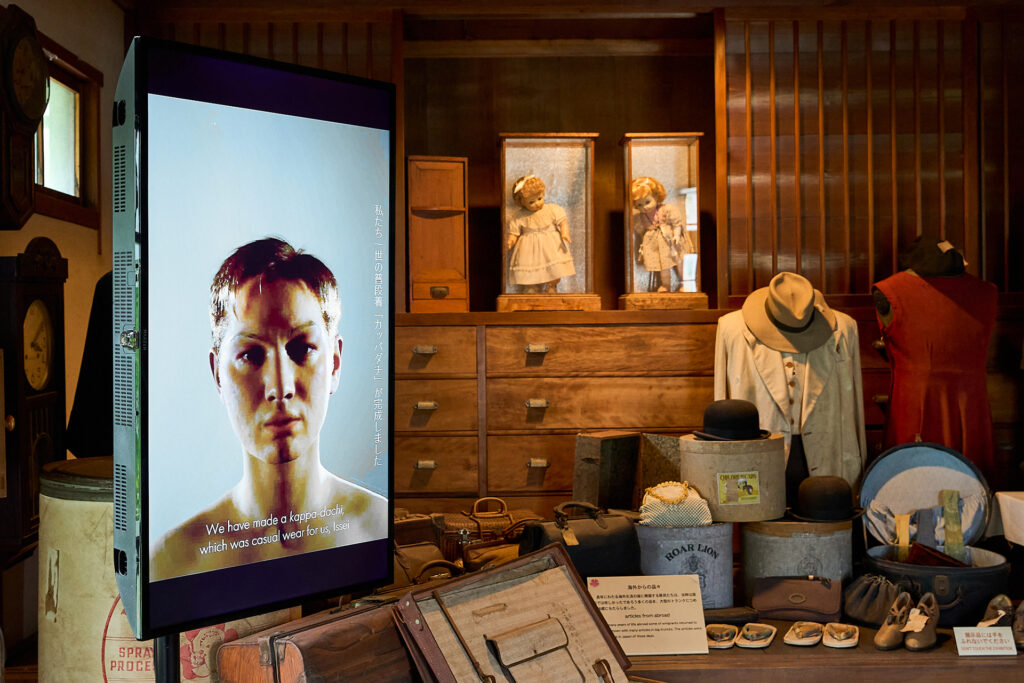
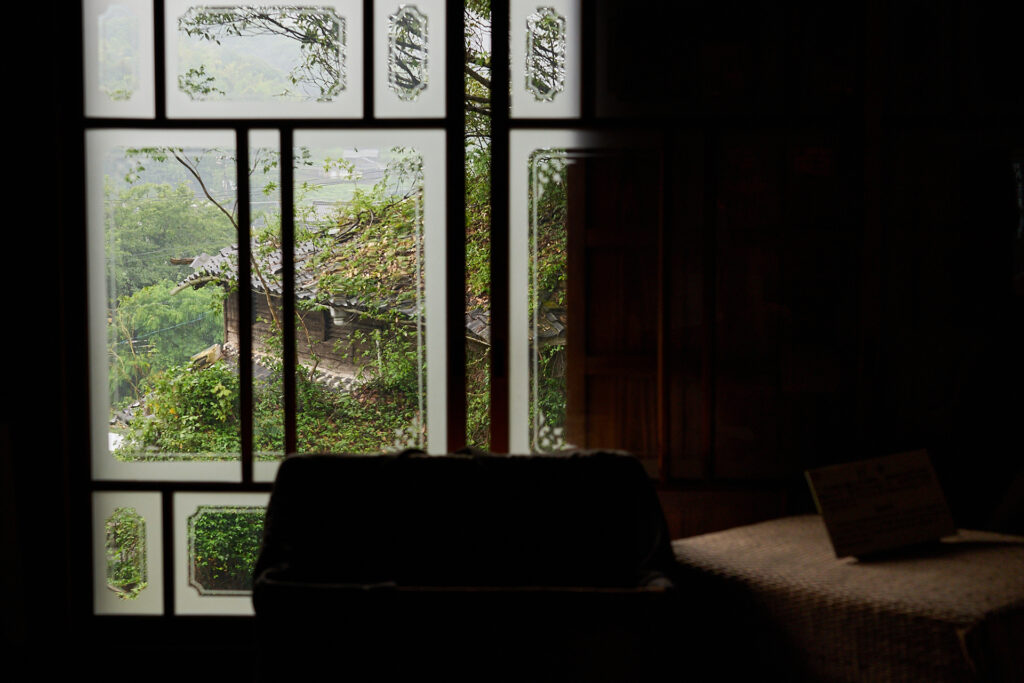
From the late 19th to the early 20th century, many Japanese emigrated to Hawaii, where they endured grueling labor on sugarcane plantations and in sugar mills. How can we make visible—and pass down—the lives and memories of these migrants, whose stories have been largely forgotten, through the medium of “voice”? Yuki Harada’s Shadowing video series, presented in this solo exhibition, poses this very question. By strategically employing the language-learning technique known as “shadowing”—where one repeats spoken English while listening—the work evokes the multilayered nature of history and subjectivity. It offers a compelling reflection on how memory can be inherited through embodied practice.
[…]
The Museum of Japanese Emigration to Hawaii houses a wealth of objects and written materials, but aside from a few videos in the theater corner, there is a noticeable absence of the actual voices of Japanese American migrants themselves. This exhibition, while formally a solo show by the artist Yuki Harada, also serves to fill that void—addressing the absence of “lived voices.” In that sense, it could be said to hold a significance worthy of permanent installation.
—from Megumu Takashima’s review, “Yuki Harada Solo Exhibition: Go stay go pakiki all da time! Eh… no give up ‘til you pau!,” published in artscape, August 1, 2023 [Japanese Only]
19世紀後半から20世紀初頭にかけて、日本からハワイへ渡り、多くがサトウキビ畑や製糖工場での過酷な労働に従事した移民。半ば忘却された彼らの生と記憶を、「声」としてどう可視化し、継承することが可能か。原田裕規の本個展で発表された映像作品「Shadowing」シリーズは、英語の音声を聞きながら復唱する学習法「シャドーイング」を戦略的に用いて、歴史や主体の多層性と重ね合わせながら、身体行為を通した記憶の継承について考えさせる、非常に秀逸な作品だった。
[…]
日本ハワイ移民資料館は、モノや文字資料は溢れているが、(シアターコーナーの映像の一部をのぞき)日系移民自身の語る声の展示はない。そうした「肉声の不在」を補完する役割ももつ本展は、「原田裕規というアーティストの個展」ではあるが、常設化がふさわしいと思われる意義をもっていた。
高嶋慈「原田裕規「やっぱり世の中で一ばんえらいのが人間のようでごいす」」レビュー『artscape』(2023.8.1)より
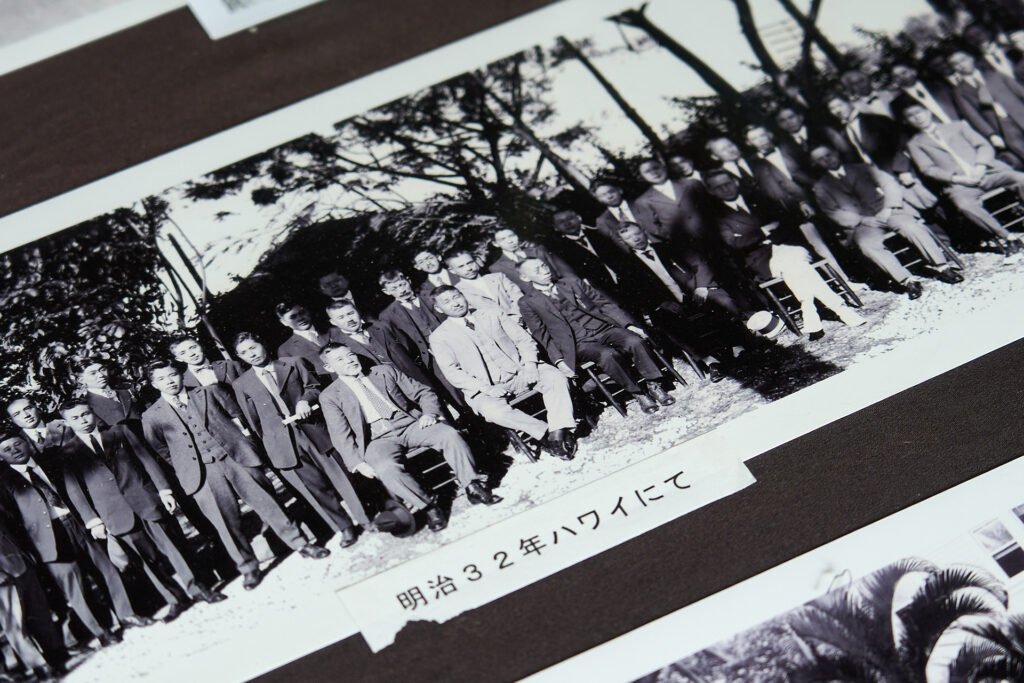
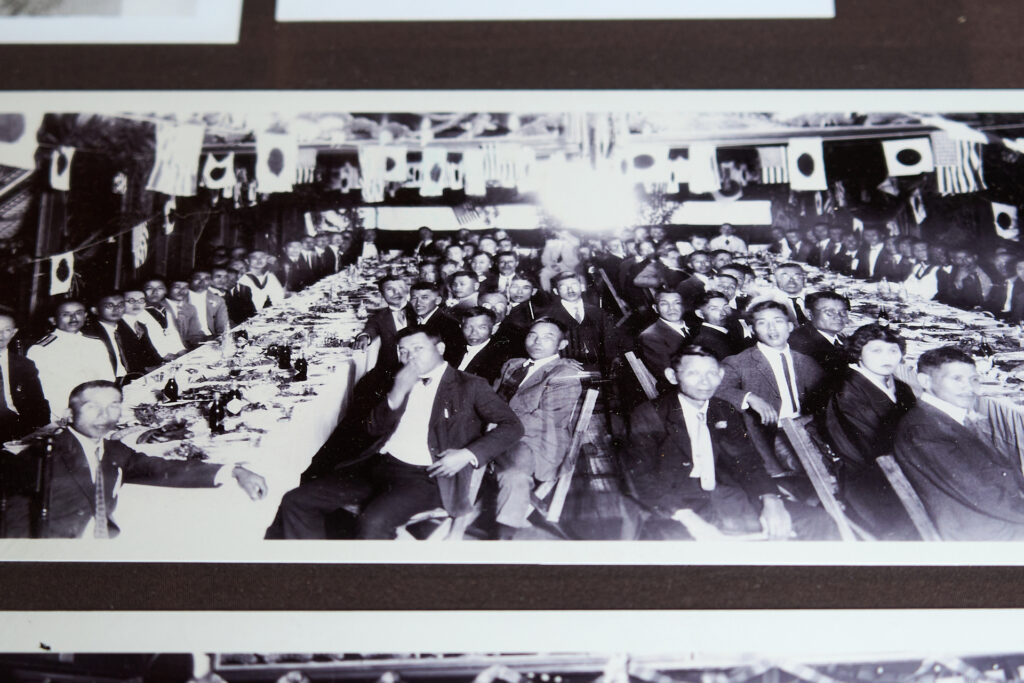
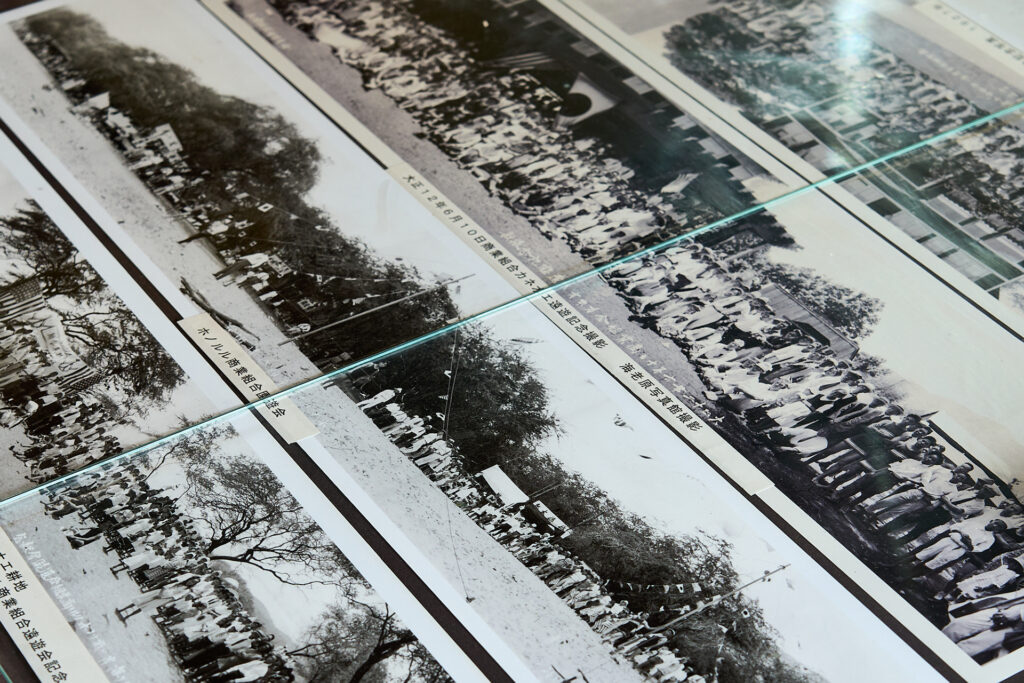
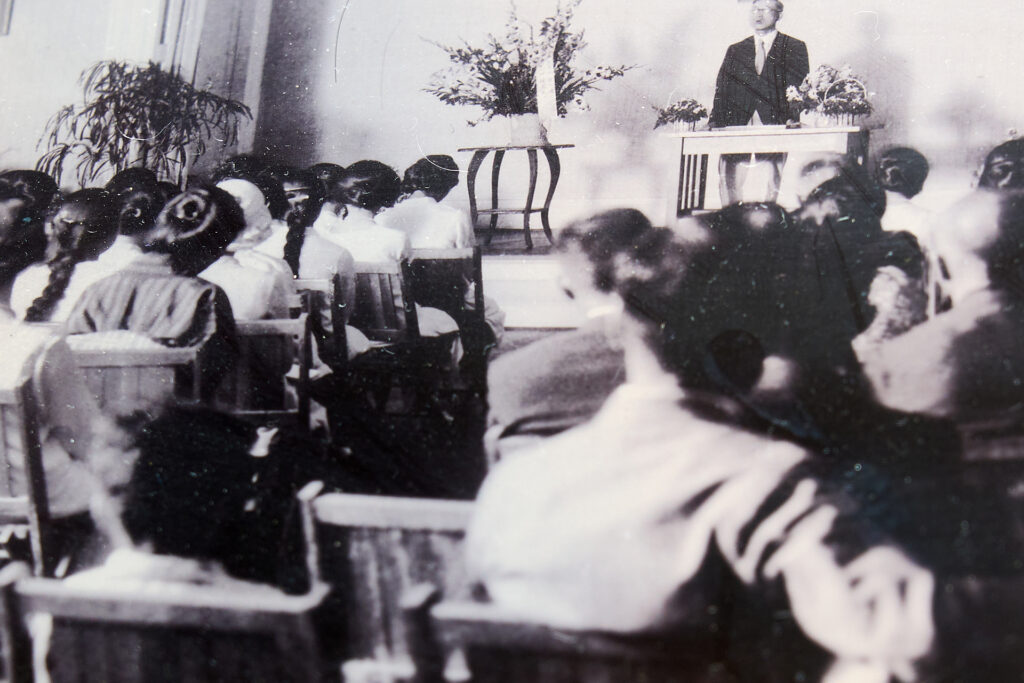
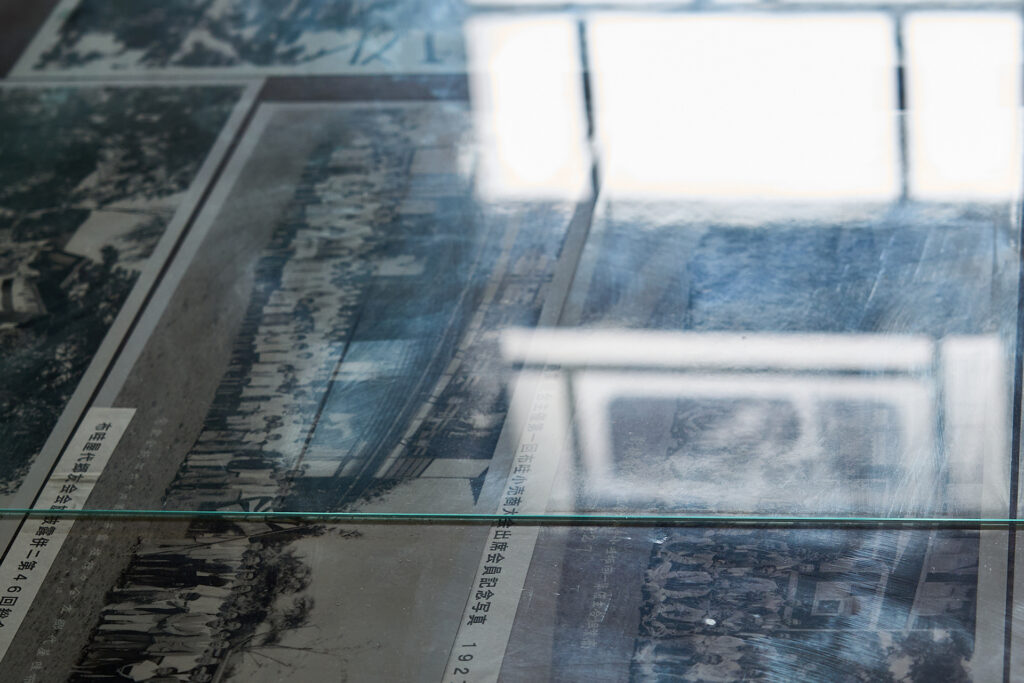
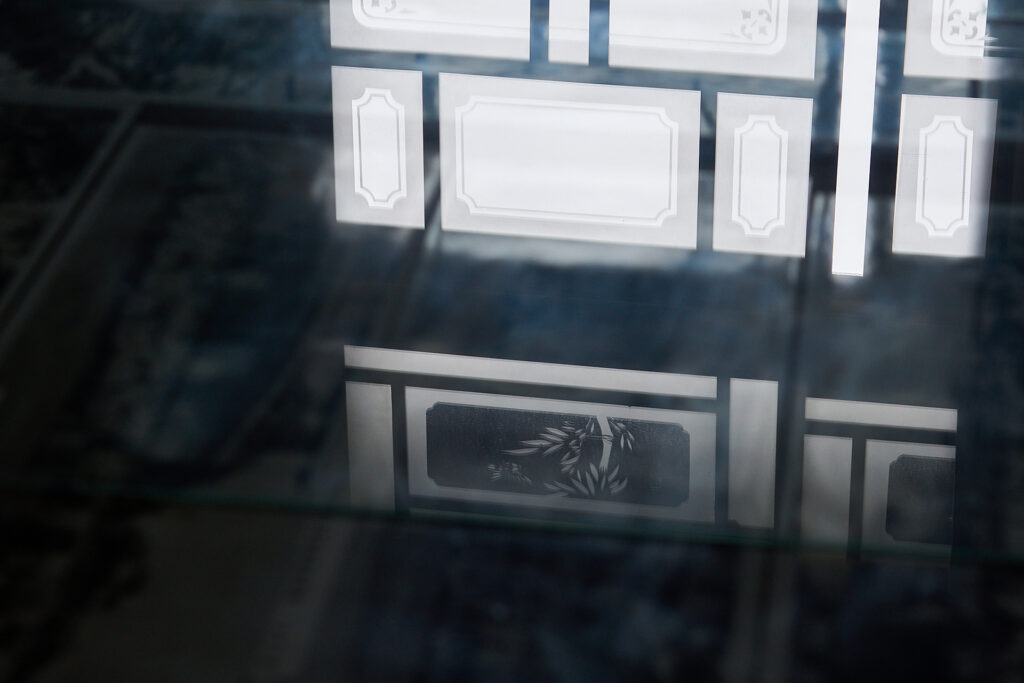
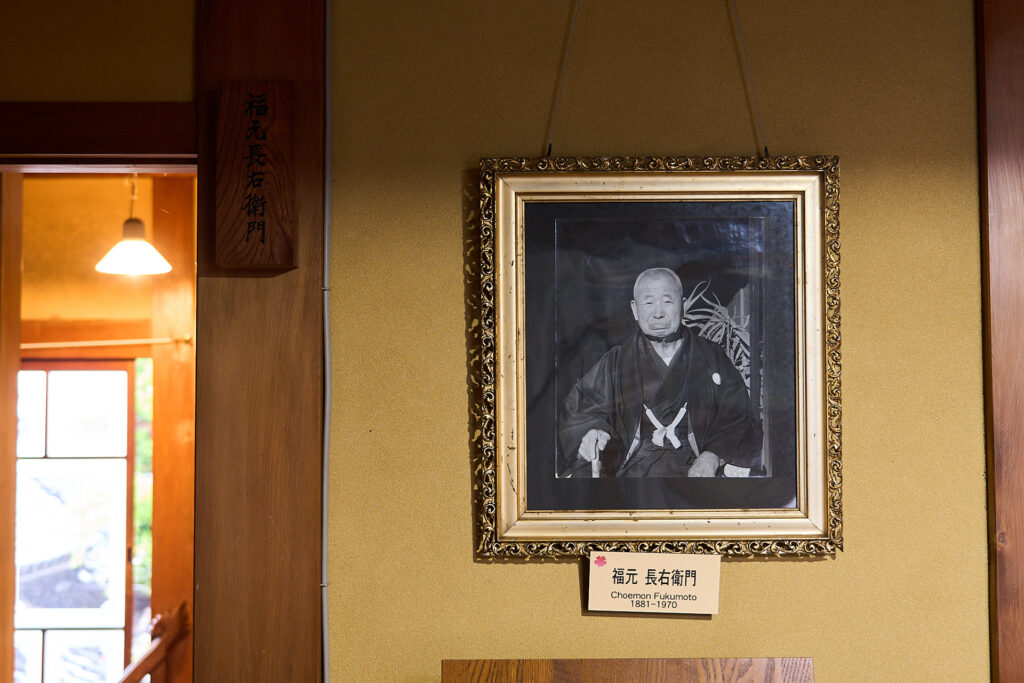
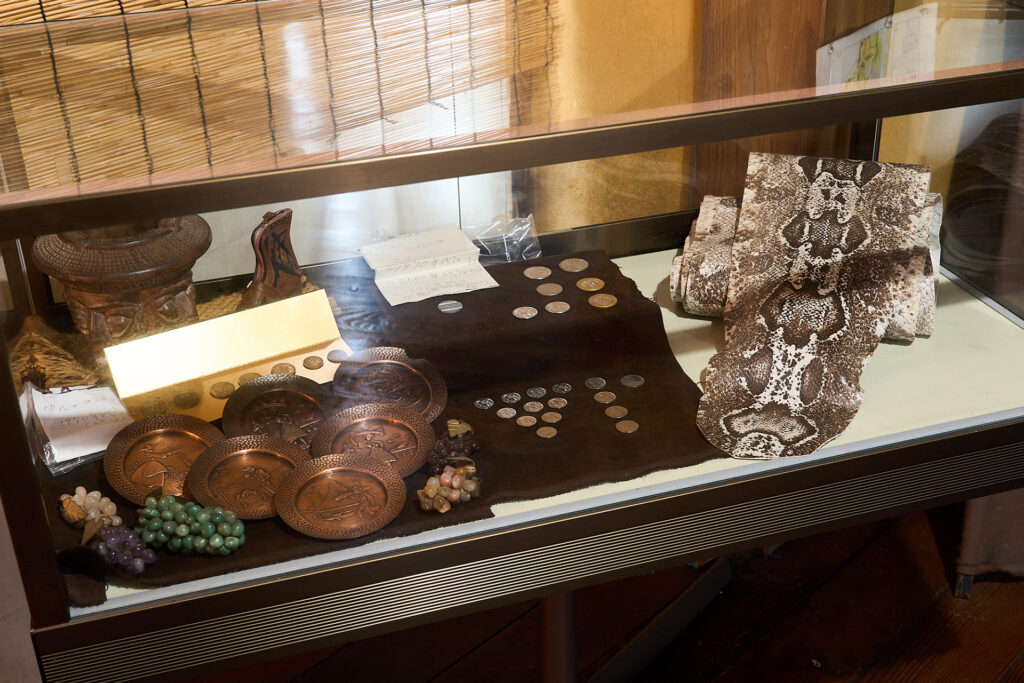
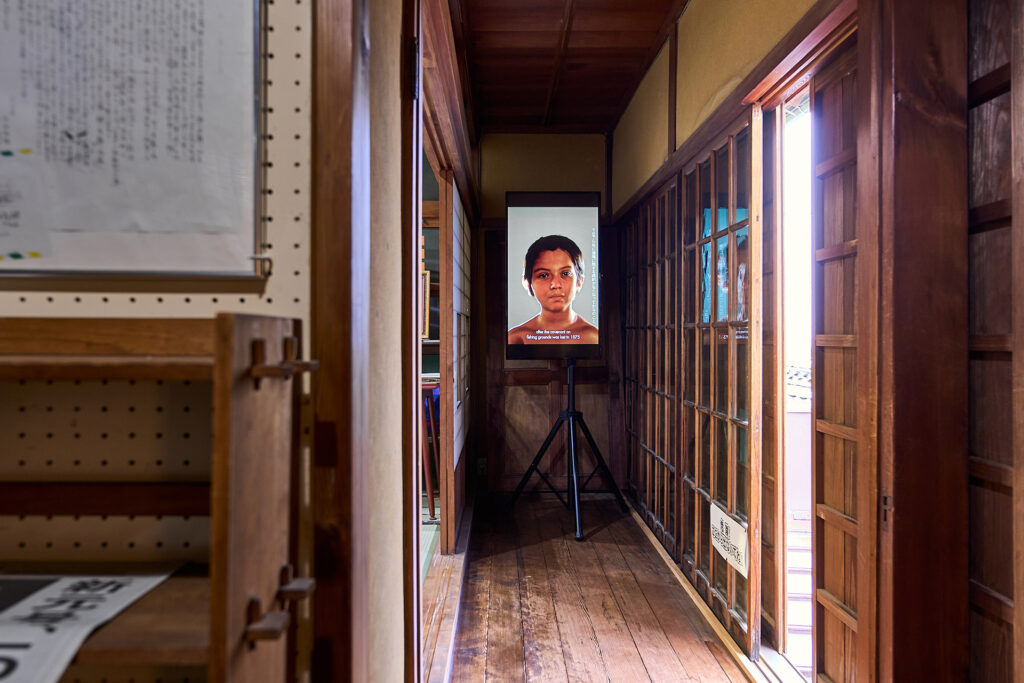
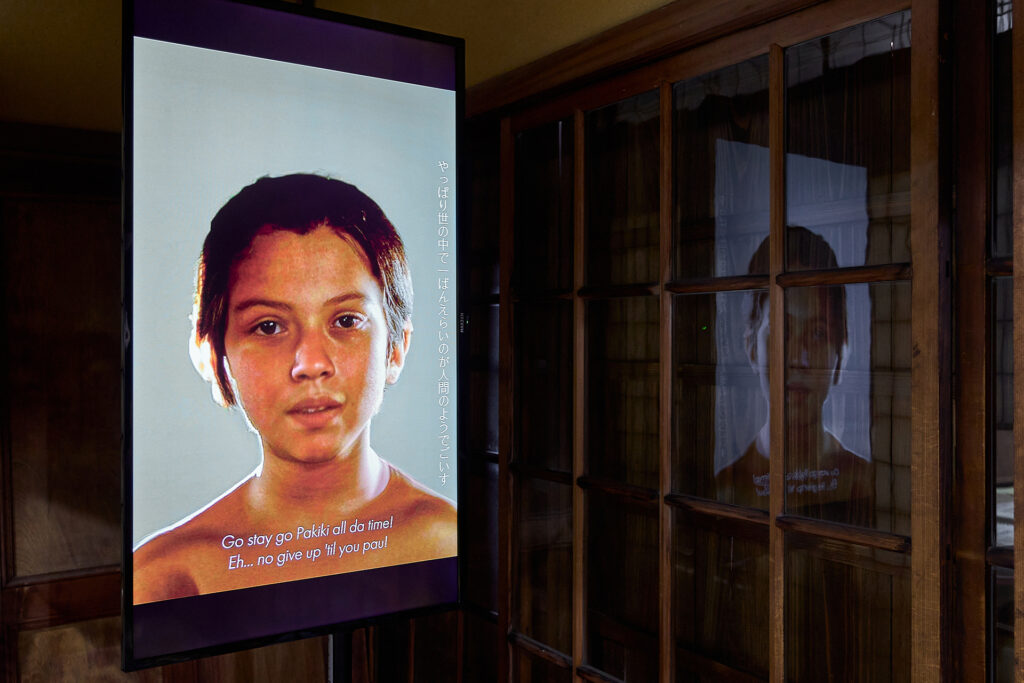
Yuki Harada Solo Exhibition: Go stay go pakiki all da time! Eh… no give up ‘til you pau!
Dates: June 20 (Tue) – July 9 (Sun), 2023
Hours: 9:30 AM – 4:30 PM (Closed on Mondays)
Venue: Museum of Japanese Emigration to Hawaii (2144 Kamikatayama, Nishiyashiro, Suō-Ōshima Town, Oshima District, Yamaguchi Prefecture)
Related Events
① Gallery Talk by the Artist
Yuki Harada will give a guided talk inside the museum. (Museum admission required)
Dates: June 20 (Tue) and July 9 (Sun), 2023, both starting at 14:00
② Conversation: Akihiro Hatanaka × Yuki Harada
A public dialogue between folklorist Akihiro Hatanaka—author of Tsuneichi Miyamoto: History Is Made by the People (Kodansha Gendai Shinsho, May 2023)—and artist Yuki Harada.
Date: July 2 (Sun), 2023, from 14:00
Fee: 500 yen (plus separate museum admission)
Capacity: 15 participants (first-come, first-served on the day)
Curated by: Mari Tsukamoto (Chief Curator, The Museum of Art, Kochi)
Organized by: Suō-Ōshima Chijin Association
Supported by: Oshima International Exchange Association
Endorsed by: Suō-Ōshima Town Board of Education, Suō-Ōshima Tourism Association
Grants provided by: The Asahi Shimbun Foundation, Energia Cultural and Sports Foundation, Kyoto Visual Culture Advancement Foundation
In cooperation with: Hakusei-ji Temple
Install: Mutsumi Tomosada
Design: Ikuya Shigezane
Photo: Takuya Matsumi
Exhibition Website
Handout [PDF]
Flyer [PDF]
Press Release [PDF]
原田裕規 個展 やっぱり世の中で一ばんえらいのが人間のようでごいす
日時:2023年6月20日(火)– 7月9日(日)9:30~16:30 ※月曜休館
会場:日本ハワイ移民資料館(山口県大島郡周防大島町西屋代上片山2144)
関連イベント
①アーティストによるギャラリートーク
原田裕規による館内ギャラリートークを行います(要入場券)
2023年6月20日(火)、7月9日(日)いずれも14:00–
②対談:畑中章宏 × 原田裕規
今年5月に『宮本常一 歴史は庶民がつくる』(講談社現代新書)を上梓した民俗学者の畑中章宏氏と原田による対談を行います
2023年7月2日(日)14:00–
料金:500円(要別途入館券)
定員:15名(当日先着順)
キュレーション:塚本麻莉(高知県立美術館主任学芸員)
主催:周防大島地人協会
協賛:大島国際交流協会
後援:周防大島町教育委員会、一般社団法人周防大島観光協会
助成:公益財団法人朝日新聞文化財団、公益財団法人エネルギア文化・スポーツ財団、公益財団法人きょうと視覚文化振興財団
協力:泊清寺
設営:友定睦
デザイン:重実生哉
記録撮影:松見拓也
展覧会ウェブサイト
ハンドアウト[PDF]
フライヤー[PDF]
プレスリリース[PDF]